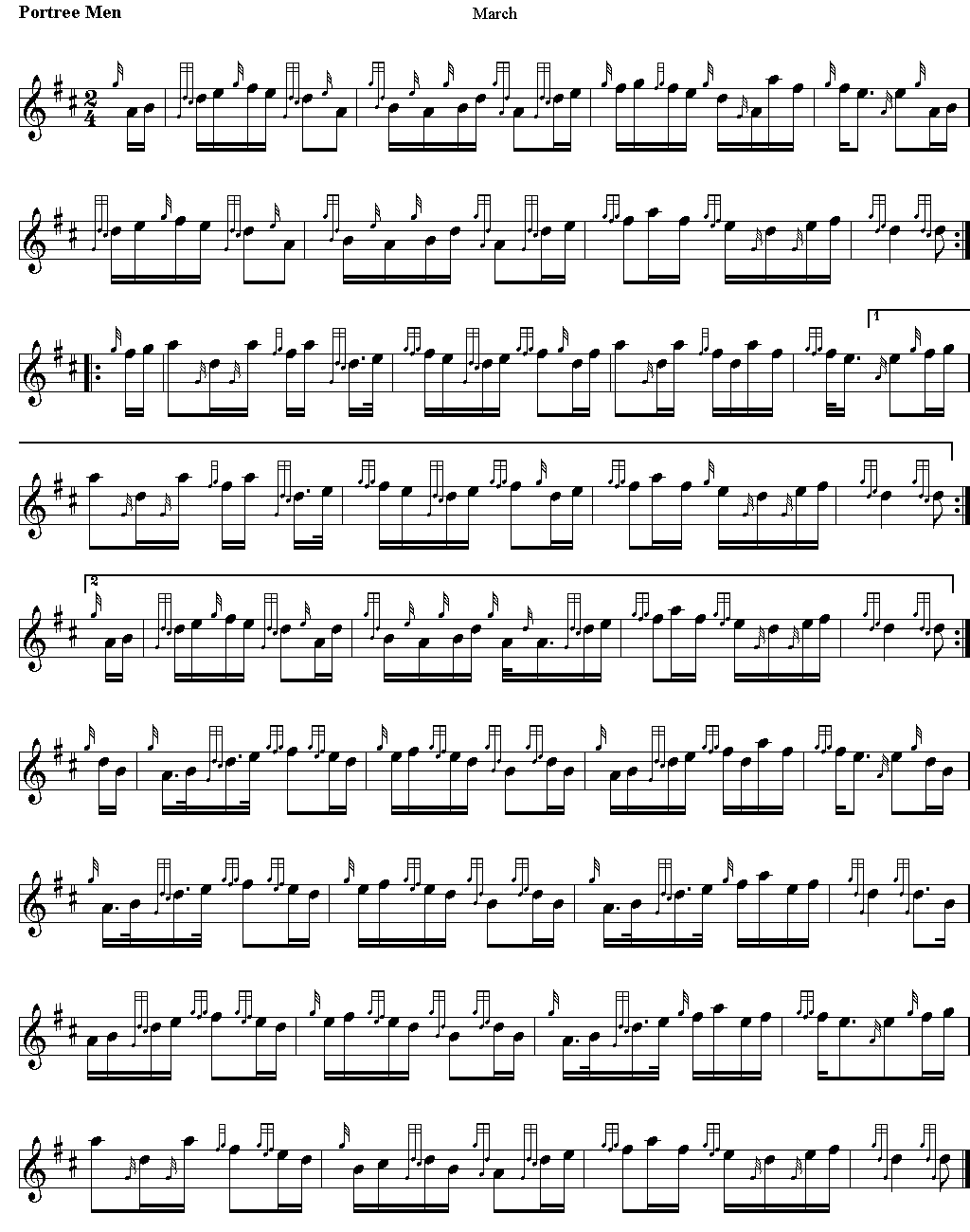|
Portree
is the largest town on, and capital
of, the Isle of Skye in the Inner Hebrides of
Scotland. The current name,
Port Rėgh
translates as 'king's port', possibly from a
visit by King James V of Scotland in 1540.
However this etymology has been contested, since
James did not arrive in peaceful times. The
older name appears to have been
Port Ruighe(adh),
meaning 'slope harbor'. Prior to the 16th
century the settlement's name was Kiltaraglen
('the church of St. Talarican') from Gaelic
Cill Targhlain.
The main street running parallel to the back of
the harbor is Bank Street. This is perhaps best
known for the Royal Hotel. In an earlier guise,
as MacNab's Inn, this was where Bonnie Prince
Charlie bade farewell for the last time in 1746
to Flora MacDonald, who had famously conveyed
him "Over the Sea to Skye".
Portree saw
other sad departures later in the 1700s, when
Skye folk, fleeing poverty and overpopulation,
boarded ships bound for North America. James
Boswell, visiting Skye in 1773 noted:
"Last year when the ship
sailed from Portree for America the people on
shore were almost distracted when they saw their
relations go off. This year not a tear is shed.
The people on the shore seemed to think they
would soon follow."
More would have
left had not an unusually enlightened laird, Sir
James Macdonald, developed Portree as a fishing
port from 1771. From 1826 Portree hosted weekly
steamers from West Loch Tarbert via Tobermory,
Isleornsay and Kyleakin, while from 1851 the
weekly ship between Glasgow and Stornoway called
here. In the 1820s Thomas Telford built roads
across Skye linking Portree with Uig and
Kyleakin. He also built Portree's pier.
1846 brought
potato famine to Skye, and during the following
fifty years clearance and emigration of a large
part of the population, many through Portree,
took place. Better times followed, and by 1894
there were daily steamer services to Strome
Ferry, and other links to places as far afield
as Ullapool, Oban, Lochinver and many ports in
the Western Isles.
The center of
life in Portree has to be its harbor. This is in
a superb natural setting, being surrounded by
high ground and cliffs. The peninsula to the
south is unflatteringly knows as "The Lump", and
once provided a spectacular setting for public
hangings on the island. Today the harbor
continues to be used by fishing boats, but is
also home to other vessels, from pleasure craft
to the lifeboat.
Built around
the harbor at harborside level are a range of
buildings which have featured in more than one
calendar photograph down the years. The run of
brightly painted buildings down the south-west
side is especially striking; but for us, the
natural stone and whitewashed buildings on the
north-west side are even more attractive.
The main town
of Portree lies above and behind the harbor. The
main focus is Somerled Square, home to the
mercat cross and war memorial, some car parking,
and most of the bus stops in the town. Much of
the shopping is to be found in the roads leading
from Somerled Square towards the harbour: and
Wentworth Street offers a range of those
"interesting but not essential" shops that make
any visit worthwhile.
In recent years Portree has spread out from its
traditional center, with newer buildings
including housing, supermarkets and the island's
main secondary school. Also on the southern
outskirts of Portree is the Skye Heritage Centre
and the associated Aros Experience, designed to
bring to life the history and experience of
Skye.

|



